“He did not speak the ordinary language”: Memories of Oppie, from a Manhattan Project physicist
By Dan Drollette Jr | July 17, 2023
“He did not speak the ordinary language”: Memories of Oppie, from a Manhattan Project physicist
By Dan Drollette Jr | July 17, 2023
During the middle of World War II, teenage physics major Roy Glauber found himself plucked out of college on the East Coast and assigned to work at a mysterious new government research center in the far-off deserts of New Mexico.
His destination turned out to be a laboratory at Los Alamos, a part of the Manhattan Project, where he was assigned to work under groundbreaking theoretical physicist Hans Bethe to help calculate the smallest amount of fissionable material—the critical mass—needed to set off a sustained nuclear reaction.
Glauber was one of the youngest scientists in the 1,400-person Los Alamos staff, and afterward he went on to a distinguished career in physics, earning a doctorate—and later becoming a professor—at Harvard University. His work focused on a wide variety of topics, including quantum dynamics, the collisions of high-energy particles such as hadrons, and the behavior of light particles, especially in clarifying how light had the characteristics of a wave and a particle simultaneously. In addition to his research, Glauber was known for his sense of humor, such as being the official “keeper of the broom” at an annual mock scientific conference sponsored by what has been called the MAD magazine of science, where his role was to sweep the stage clean of paper airplanes. (It’s become a tradition for members of the audience to throw paper airplanes at the stage to celebrate the end of the night’s proceedings.)
In 2005 he was awarded the Nobel Prize for physics; some years later, the 91-year-old Glauber attended the Lindau Nobel Laureate Meeting, where he agreed to an interview with me. Sadly, he died a year-and-a-half later, in 2018.
In this interview, one of the last surviving eyewitnesses from the effort to build the first atomic bomb gives his impressions of that project’s driving force—the director of the Los Alamos lab, J. Robert Oppenheimer. Glauber describes what it felt like to be working there as a young physicist; experience the overwhelming need for secrecy—and witness the test explosion of the first atomic bomb.
(Editor’s note: This interview has been condensed and edited for brevity and clarity.)
Dan Drollette Jr: To start things off, I thought we might look at these photos on my laptop of 1940s security ID badges from Los Alamos. As you can see, each one has a name, an ID number, and a kind of small black-and-white photo—but at least they each show the individual faces of the people who worked there at the time.[1] (See photo at top of page.)
Roy Glauber: Oh, yes. (Looks through array of photos on screen.)
There’s Dorothy McKibbin.[2] [McKibbin was Oppenheimer’s right-hand at the Manhattan Project and unofficial den mother to all the newcomers.]
And there’s a very young Richard Feynman.[3] Though they all look young.
You know, there was very little sense at Los Alamos at the time that any history was being enacted which would be of interest after the war was over. So, there was very, very little photography devoted to the individuals.
Although there was a large photographic division, which photographed all the experiments—including all the failures, and there were vast numbers of those. (Laughs.)[4]
But there was not much on simply recording the way people lived, and where we hung out.
Drollette: I like that smirk on Feynman’s ID photo. It’s a funny expression. (See below.)
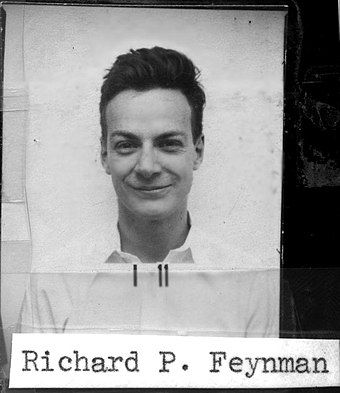
Glauber: Well, for all intents and purposes, he was the resident clown. You would often find that wherever people gathered for lunch, there would always be a little knot of about half-a-dozen women all in the corner, laughing—and in the center would be Feynman, telling stories. He really made quite an entertainer of himself. He happened also to be possibly the brightest young mathematician in the place. I met Feynman in the year 1943, when I arrived there.
Drollette: And how old were you when you went to Los Alamos?
Glauber: I was 18.
Drollette: From the description you gave for an oral history about the Manhattan Project,[5] it sounded like they didn’t tell you much about what you were getting into.
Glauber: That was a matter of security, of course.
But I quickly got a general impression of what might be in the air, because the story of fission had been really big just a few years earlier, in 1939. All during the middle ‘30s, [nuclear physicist Enrico] Fermi had been subjecting many elements to irradiation by neutrons… By 1938, he was doing it with uranium. He found all sorts of funny particles flying out, which he could not analyze, and which were found to have strange chemical properties. And researchers had developed the idea that maybe they might be evidence of the fissioning of uranium.
That was a really great discovery, which then led to speculation about the possibility of a chain reaction. It made a big stir in the newspapers for a time, and it was an exciting story, at least for a kid like me.
But then it all just … disappeared. Not another word about it. There was speculation that fission might have some strategic importance, and so it was declared secret, at least in America. And one really heard nothing more of it, in the several years that followed. The story went subsurface. It just went nowhere.
Drollette: But you had a general kind of sense?
Glauber: Well, I don’t know if I’d say that, but that was what had been going on in the background. All I knew for sure was that we were at war, I was in college, I’d registered for the draft, and I was expecting to be going directly into the armed forces….
But suddenly other things began to happen … and happen quite rapidly. It all started quite soon after I filled out this questionnaire that had arrived from Washington, from an organization which has almost never been heard of before or since, called the “National Roster of Scientific Personnel.”[6] It was intended to put people who were trained and with the right skills into the right places—and there was a great shortage of people who were well-trained.
While filling out that questionnaire I wrote down that I had taken all these courses, which were almost all things that one takes much later, in graduate school. So, to make a long story short, they came and got me—I received instructions to leave Harvard as soon as one could leave that school term and get a ticket for the first train to Chicago.
Drollette: But weren’t you only in your first year of college?
Glauber: Well, you have to understand that by ’43, they were tired of drafting older men—particularly those with families. They wanted young guys for the military. And it all makes sense, given my personal history: I had skipped some grades in high school—which was much more common back then, when they really pushed people forward academically, regardless if they were really mature enough—and I’d been involved in all kinds of science projects, and a high school teacher had given me some books on calculus. Which all meant that I got a little ahead.
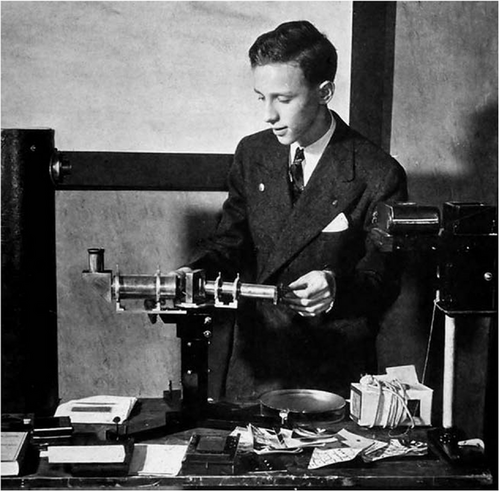
And then after I did get into college, all the professors started leaving to go work in the war effort, and the college administration announced that this would be the last chance for many of us to take some of the more advanced courses for the duration of the war. So, the whole education business was kind of telescoped for us—meaning that I had all these graduate-level classes on my school record.
Drollette: What happened next?
Glauber: It was very secretive; they would not say where one was going after Chicago. After I got there, I had to make a phone call to someone at some agency, who gave me another train ticket that turned out to go to a place in New Mexico I’d never heard of, called Lamy—not much more than a wooden boardwalk for a station. And it was there that I was supposed to get off, and someone would meet me. Meanwhile, any personal belongings I wanted to ship out—books and clothing—would go to a post office box. I still remember the address: Post Office Box 1663, Santa Fe, New Mexico.
Well, I had never been west of Chicago. So that alone was quite an exciting business for me, riding on the Santa Fe Railroad, seeing bona fide cowboys, and watching people who were bronze in color and wearing furs and blankets get on the train.
When I got to Lamy, I was met by a tall, slender fellow who to all intents looked like a cowboy: He literally had a 10-gallon hat and wore a checked yellow shirt and dungarees. And this cowboy picked up not only me from the train but a short man with a derby hat and a navy-blue overcoat who also got off at that same stop—whom I later found out was John von Neumann.[7]
The most remarkable thing was the geography. I’d never seen anything quite like that before; mesas and gulches and mountains, with narrow roads dug into the sides of canyon walls…
And this chap, this cowboy figure I’ve described to you, was a mathematician that previously worked with Neumann, and they started talking about what was going on in “the research up on ‘the Hill.’ ”
They had to resort to this way of talking, because they felt that was what one had to do in order to preserve the lab’s secrets—they didn’t know my state of clearance at all. So they described in terms appropriate to them the terrible things that were going on in a particular computation. It was not in the real world, but they were describing it as if it were the real world.
The fact that matter was being annihilated was to them a simple description of a mathematical mistake, while to me it was a description of the most incredible feats going on in the real world. So it was a very unusual sort of introduction to this kind of life.
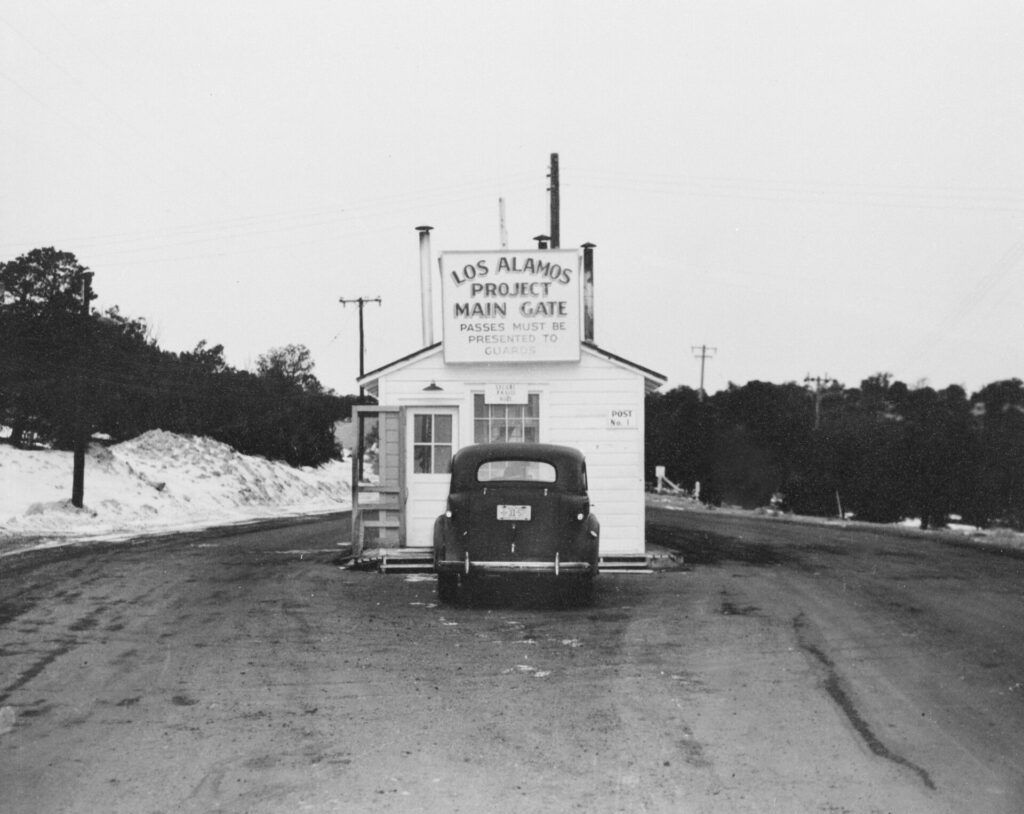
Drollette: What were your first impressions?
Glauber: Well, I mentioned the geography: all canyons and plateaus. Los Alamos was placed in a virtually impassable area, miles from the nearest town. At the stage that I got there, there were still some log houses remaining from what had formerly been the Los Alamos Ranch School for Boys—a tuberculosis sanatorium—and the beginnings of more new structures. They had started putting up dormitories and some small apartment buildings a few months earlier, but none of them had space for more than four apartments with small families.
And there were quite a few small families, and many families that got appreciably larger. It had one of the busiest maternity hospitals, I think, that were run anywhere by the US Army. (Laughter.)
You have to understand that these were all young people; the older people didn’t want to go to this godforsaken location.
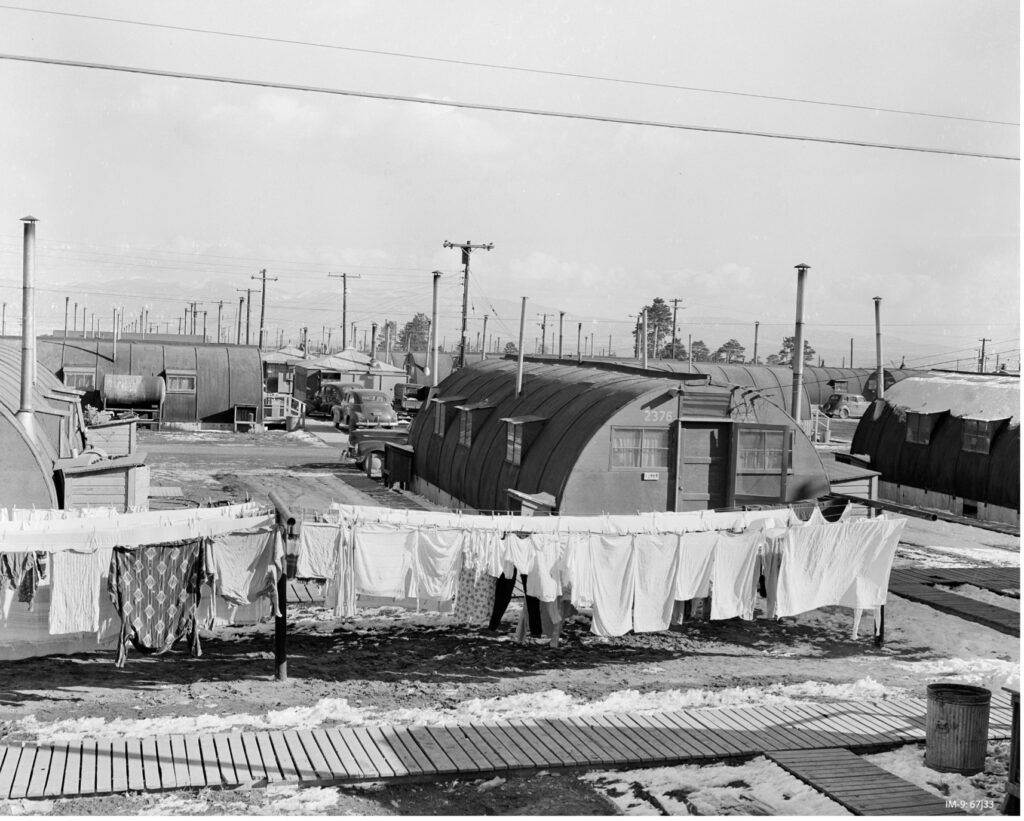
Drollette: What was the very first day of work like at the Manhattan Project?
Glauber: The first morning I was there, I was given a list of people to march around and meet. It was as if they had to compete for new personnel—to speak up and say “I want the new guy.”
Out of them all, I best remember an interview with Robert F. Bacher, who was head of the physics division.[8]
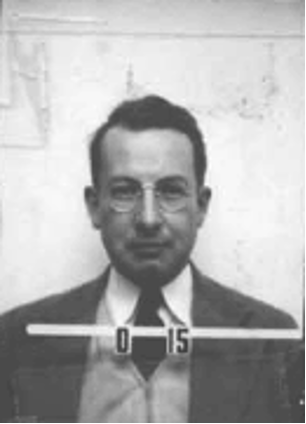
On meeting me for the first time, Bacher said: “I bet you’re interested in what we’re working on here.” And I said I didn’t know.
So he said: “What’s your best guess? What do you think we’re working on?” He was asking me—an 18-year-old!
So I told him that “Judging from the treatment that the story had been given by the newspapers earlier, you’re probably trying to create a chain reaction based on fission.”
He said: “Well, that’s a very erudite guess. But I have to tell you, we succeeded in doing that a year-and-a-half ago”—he was describing the fact that they had indeed gotten a reaction to occur in Chicago, although that had nothing to do with Los Alamos.
And he added: “I have to tell you, however, that we are indeed working on a chain reaction here, it just happens to be a fast chain reaction, not a slow one.” And he then went on to explain that it was a bomb.
I was really quite upset by that—the notion that this was not going to be so much about a gift to mankind, but a weapon.
And it did take some weeks and months to overcome that feeling … and to discover that there were really interesting mathematical problems involved in making this bomb. And those really did keep me busy for the next two years.
So anyway, that’s how I learned what the story was.
Drollette: Was there any kind of orientation?
Glauber: There was something called the Primer, which you had to go and read—a sort of text for beginners. It was available in the library, and you had to sign out a copy, where you could learn of all of the speculations about the bomb that had been voiced in the months earlier.[9]
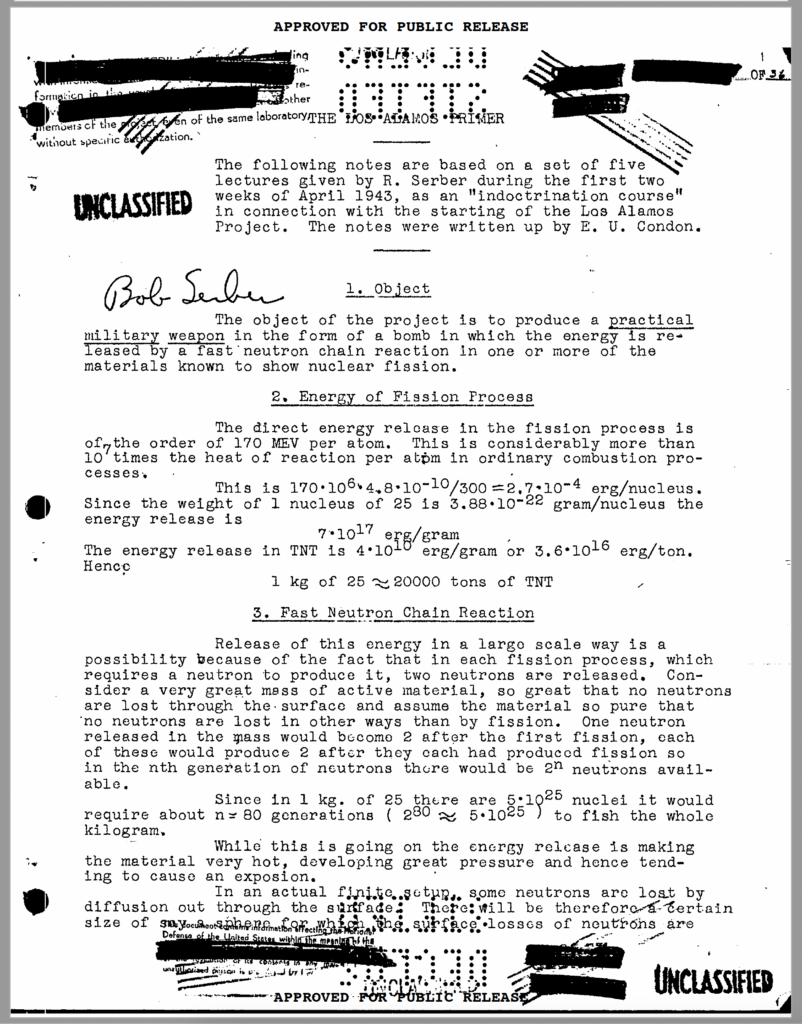
Drollette: Were you at the Trinity Test?
Glauber: Well, how to put this… I saw it. (Laughs.)
They didn’t want us to fear its presence, so it was okay to view it from a distance.
But I had no authorization, if that’s what you mean. Just as important, there was also a considerable shortage of transportation. Very few people had cars at Los Alamos, and gasoline rationing meant you couldn’t go very far, anyway.
Luckily, I did get a lift to a mountain near Albuquerque, to the only place where a road goes to a really high altitude at that area, called Sandia Peak… I think there may have been 20 or 30 people altogether who went to the top of Sandia to try to see that test.[10]
Unfortunately, we had no radio contact with the people running the Trinity Test, which was on a plain almost due south of Albuquerque. Now, we knew the test was supposed to be a couple of hours after midnight. But there was, in fact, a lightning storm at that time so it was delayed. I don’t know if lightning was striking right there at that testing spot—but frankly, it would have been very scary to be anywhere near there, because the bomb was held in a 100-foot-tall steel tower. And the lightning striking around there would have had a considerable chance of striking that tower.
Anyway, after a while, we saw some flashes, little flashes—which would have been considerable disappointments.
So by 5:30 in the morning, nearly everyone had left, because you got tired of just sitting there with no indication of when it was going to happen.
But I was a little more stubborn. The others had left, but I was sitting there facing in that direction when at 5:30 in the morning, it was as if the sun was rising from the south.
Drollette: So you saw it?
Glauber: I saw it. (Pause.)
Drollette: That must have been some experience.
Glauber: Yes. (Pause.)
Drollette: What was Oppenheimer like?
Glauber: He was a remarkable choice. Oppenheimer was an ultra-intellectual American, and he loved to express himself in poetic images and phrases. When he was in college—I think it took him only three years to go through Harvard—he developed the knack of reading Sanskrit and a passion for Indic poetry. Now, I can’t begin to tell you how deep or how accurate his knowledge was of these areas—none of us could. There was no one else at Los Alamos who knew about this sort of thing.
But he had studied it, and he used those phrases often. Oppenheimer used them particularly to describe the unearthly things that one saw in a nuclear explosion. He had a passionate involvement with expressing himself in literary language. He did not speak the ordinary language of New York, which many of us did.[11]
Drollette: You’re referring to his comment “I am become death, the destroyer of worlds”?
Glauber: Exactly, exactly.
So he was very different. He did not sound like a typical American leader at all. Yet somehow all of us respected that—and even admired that. He was about as opposite an individual as you could imagine from General Groves [the head of the military side of operations at Los Alamos].[12] They were like two polar opposites.
But they often appeared together in public—the leader of the science side and the leader of the military part. They were very careful that at important, strategic times, they would both appear together. There was something really symbolic about that, and you’ll notice it in many of the photographs.
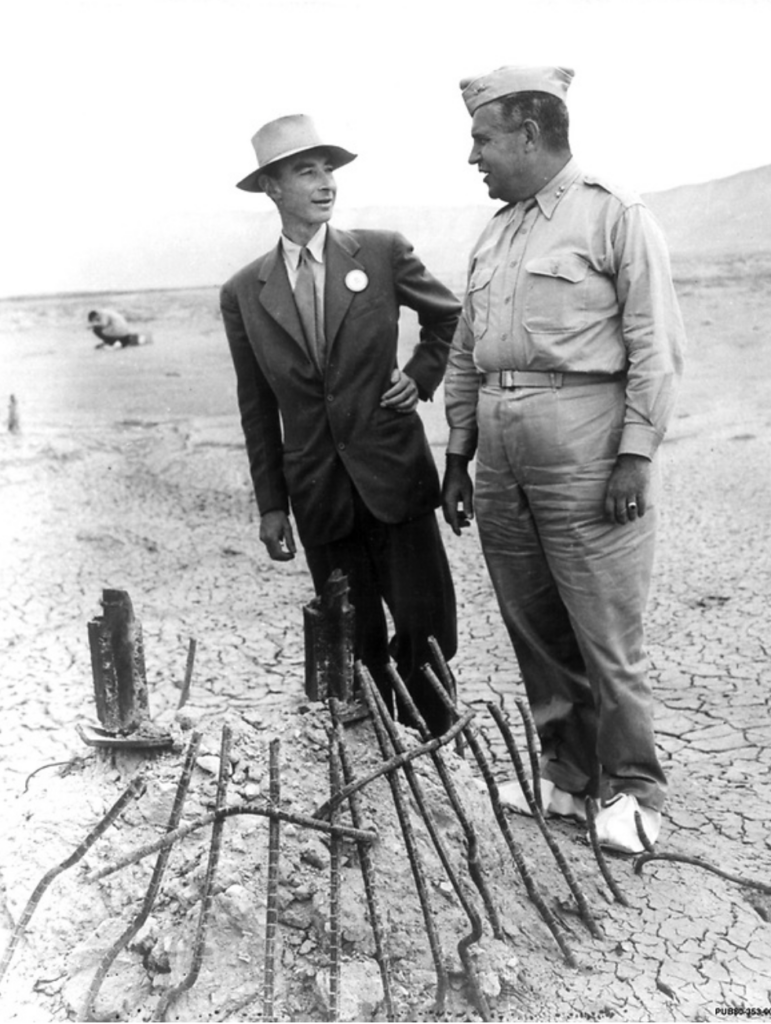
Drollette: Let’s see if I can call it up on the screen—okay, here’s the ID badge photo of Oppenheimer.
It’s not very good, more like the picture you have on your driver’s license. But even in the security picture, I get a sense of him as being sort of otherworldly.
Glauber: That’s a good word. He acted otherworldly, a little. Women found him somewhat strange.
I knew one woman he had gone with before he married, and she thought that he behaved very strangely. She described how one time they had driven up to some place or other above Berkeley. He had left her sitting in the car and went off on some kind of solitary walk by himself one night, leaving her. (Laughs.)
There were many such stories about him. He was a rather different sort of person. He had already had some difficulties.
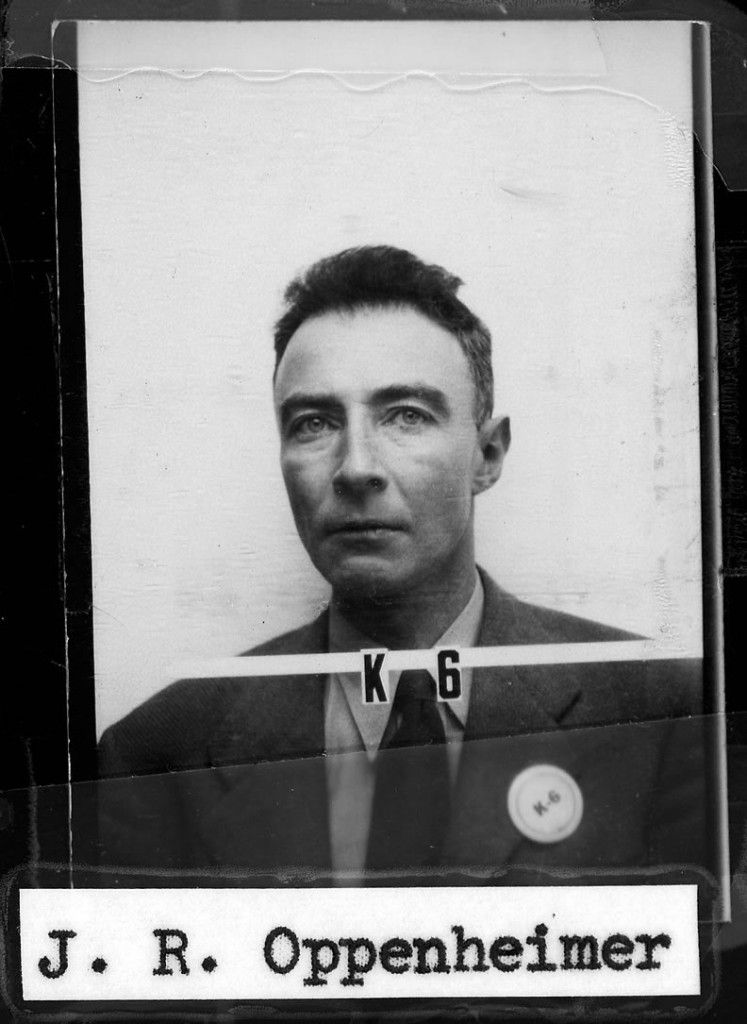
He was rather—how should I say it—an aesthete.
And in Britain, he had a rather difficult time: He tried joining an experimental group, and there was some sort of serious trouble.[13] I can’t remember what the trouble was, but it was really quite serious. He left Britain and went to Germany. And there, he began working under [renowned theoretical physicist] Max Born and decided that he was a theorist, not an experimenter. He would never have been a decent experimenter, he was altogether too nervous. He never stopped smoking, he always had a cigarette in his mouth. He was a very nervous, tense man.
But he expressed himself quite beautifully. And the scientists really seemed to respect that. He never had any serious trouble with the scientists; no insurrection or disagreements.
Drollette: Was he soft-spoken?
Glauber: He was, yes.
And the remarkable thing, which you’ll catch in my own photos when I show them tomorrow, is that as a theorist, Oppie went around and visited all the experimental sites. He involved himself with the experimenters as much as possible—even though he never touched experiments and never went near the performance of experiments himself, after his bad experience in Britain.
Drollette: Is there something that makes theoretical physicists different from experimental physicists? They just seem to be a different group.
Glauber: Well, they are, they really are. First of all, many of them are physically clumsy.
You put them in the laboratory and the glassware starts breaking. (Laughter.)
Although that isn’t true of all of them, of course.
And I’ve got to say that when I was a kid, I myself thought that I was going to be an experimenter—and then mathematics moved me away. I felt later that that was a mistake, and that I should have become an experimenter. But it was too late.
Drollette: What did Oppie do that made Los Alamos so extraordinary?
Glauber: Well, he was extraordinary. He was a man of really considerable insight. The curious thing is how few things he actually did himself; there is next to nothing known by Oppenheimer’s name. But he understood it all and described it very well—and made quite a contribution that way.
Drollette: So he was a good manager, he understood the people he was dealing with?
Glauber: Well, you never would have thought that; he had had zero experience as a manager. And putting him in charge was the most imaginative thing that General Groves ever did.
He was rather an aloof person, and not easy to get to know.
But on the other hand, Oppie somehow created an atmosphere at Los Alamos that was unique, where everyone was working together on a mission. Consequently, even if you were a student, you could talk to a famous physicist.
All the physicists who were there were very accessible, and very involved. The only exception that comes to mind is Edward Teller.
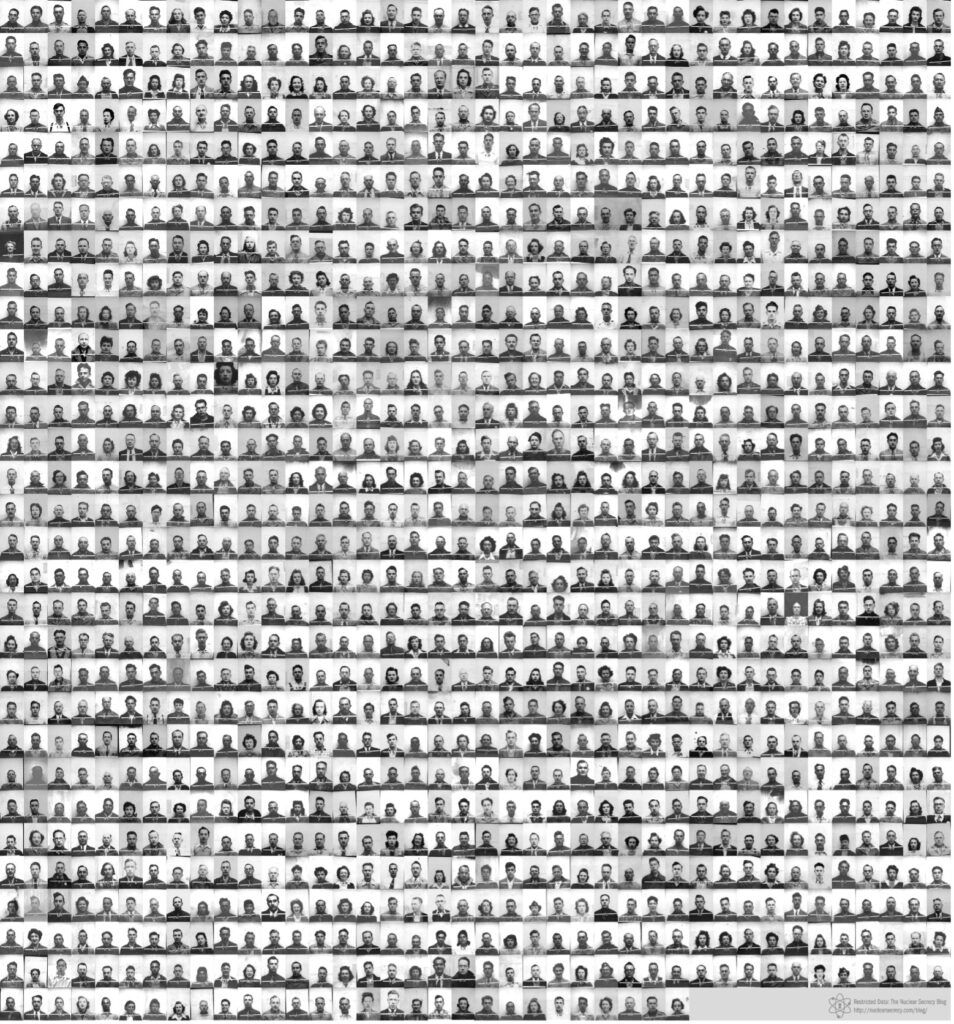
Drollette: What was Teller’s role?
Glauber: Teller was one of the early theorists about chain reactions. And he had worked on why the stars shine—the thermonuclear reactions which go on in stars. He was known for that sort of thing.
But Teller was also a very impatient man, and very outspoken.
And I must say, when I got to Los Alamos, he was absent. There was an office next to mine which had the name “Teller” on the door, but there was no Edward Teller. He had determined in late 1943 that he had not been given the important positions that he wanted, and he had left in a huff. He left for something over a month, and then came back.
He was a big noise.
But Oppenheimer welcomed him back and gave him a division all his own, that would deal with what was called the “Super”—and the Super turned out to be the only passion that Teller truly had.
Drollette: What was the Super?
Glauber: That was the idea that one could use the fission reaction from the atomic bomb as a sort of match to ignite the kind of enormous continuous release of energy that occurs in a thermonuclear reaction—the kind that the stars burn. So, Teller’s notion was that you would use the fission bomb to ignite a thermonuclear reaction, which would release unlimited amounts of energy. And eventually, by 1954, that was what happened.
Drollette: So Teller was the man behind the H-bomb.
Glauber: Well, he tried hard to be the man behind the H-bomb. When the war was over and a great many people began leaving Los Alamos, Teller was the one person who would not leave. Teller felt his mission was still to start the thermonuclear reaction—and he had no success at it.
And that failure to discover how to ignite that reaction continued on through 1949, which was the point at which the Russians tested their first fission bomb.
So, immediately there was pressure on President Truman to get the Super project regenerated, in order for the United States to have the hydrogen bomb—an order of magnitude of destructive power above what we had been working on during the war.
And I must say that the hydrogen bomb has never done anybody any good. It does exist, and it is an enormous threat, but it has accomplished nothing in constructive terms.
Nothing for science.
Nothing for anybody.
Nothing for security.
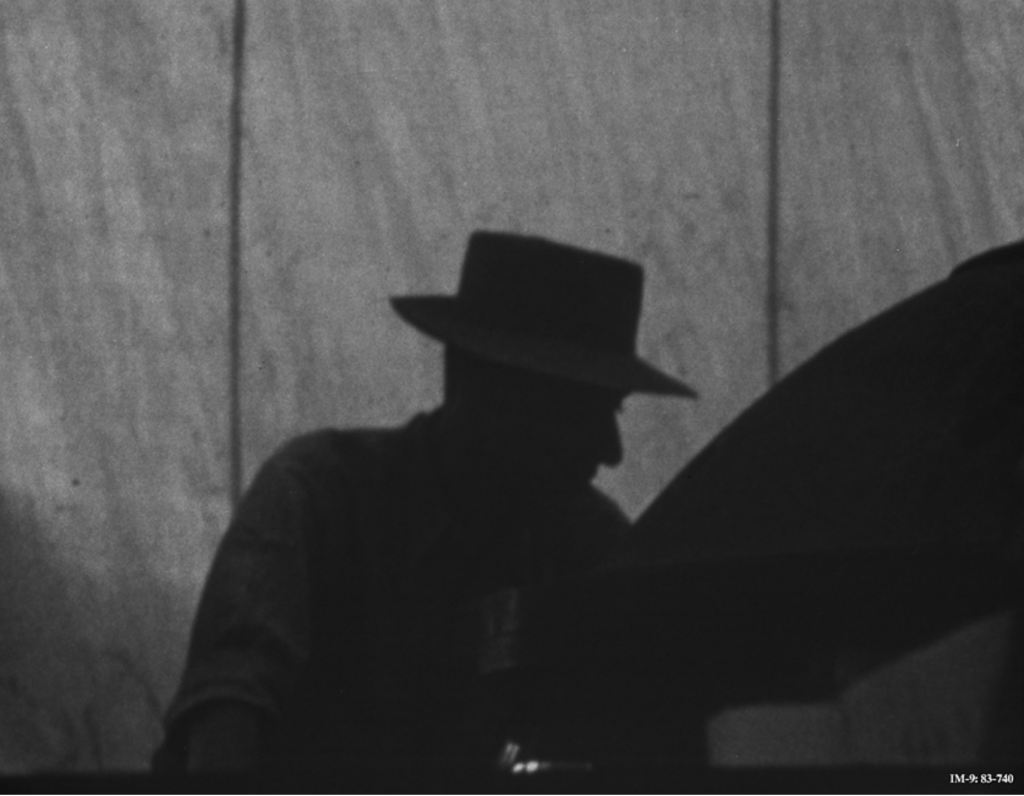
(The author thanks the Lindau Nobel Laureate organizers for their journalism fellowship, which enabled this interview. For more on Roy Glauber and this time period, see the Voices of the Manhattan Project. [14])
[1] See the Bradbury Science Museum’s “Before and after: Newly restored badge photos from the Lab’s original workforce” and “The Faces of Project Y” on Alex Wellerstein’s Nuclear Secrecy Blog
[2] As Oppenheimers’ deputy, McKibbin was the all-purpose administrator of the Manhattan Project, on-call 24 hours per day, and often the first person that new arrivals met. She issued passes so newcomers could get on the grounds, arranged housing and transportation—and sometimes kept an eye on secret papers. According to an account in Gatekeeper to Los Alamos, she would burn all the papers she produced at the end of each work day. She also helped make the arrangements for many of the staff’s weddings—several of which were conducted in her home.
[3] In 1985, this Nobel Prize-winning mathematician and physicist released a lighthearted book, Surely You’re Joking, Mr. Feynman! Based on his recorded audio conversations, it contained anecdotes about Feynman’s interests in physics, art, music, drumming, languages… and amateur safe-cracking, with which Feynman amused himself at Los Alamos, breaking into locked file cabinets. See also PT Lock and Safe’s “Richard Feynman: Physicist and Safecracker”
[4] See https://thebulletin.org/2020/07/in-their-own-words-trinity-at-75/
[5] See https://ahf.nuclearmuseum.org/voices/oral-histories/roy-glaubers-interview-2013/
[6] To this day, information about the roster is limited. But some information can be found in the February 1944 edition of The Scientific Monthly, published by the American Association for the Advancement of Science.
[7] John von Neumann was a mathematician who went on to pioneer many of the basic principles of modern computer science, as well as make major contributions to quantum mechanics. According to the book The Pentagon’s Brain: An Uncensored History of DARPA, von Neumann also played a vital role in developing and promoting the concept of “mutual assured destruction” which underpinned much of the strategy of the Cold War. In 1999, von Neumann was to be named “Person of the Century” by the Financial Times.
[8] Bacher, a nuclear physicist, later became head of what was called the “Gadget Division” at Los Alamos, responsible for designing everything about the atomic bomb except the explosive lenses.
[9] What became known as the “Los Alamos Primer” was developed by physicist Robert Serber in April 1943 to help newcomers get up to speed. In the words of a subsequent retrospective in the September 2017 issue of Physics Today: “…the Primer is an extraordinary document. Perusing it gives one a sense of being there at the start of the Los Alamos project. In its 24 pages, Serber both adroitly summarized the state of existing knowledge and laid out a prescient road map for the work ahead and the challenges that might arise.”
[10] As the crow flies, the site of the atomic bomb test—now known as the Trinity Site—was in the desert roughly 150 miles due south of the Los Alamos lab where the work was done. Sandia Peak was more than 50 miles closer to the test site, and the informal viewing platform at Sandia Peak was more than half-a-mile higher than the elevation at Los Alamos.
[11] Many of the researchers literally spoke with a New York City accent—appropriately enough, for something code-named the “Manhattan Project.” A large number had even attended the same, tuition-free, public, STEM-oriented magnet schools in the five boroughs of New York—particularly the Bronx High School of Science, founded just five years earlier. The Wikipedia entry for “Bronx Science” says that “With eight Nobel Prize-winning alumni, seven in physics and one in chemistry, it has produced the most Nobel laureates in science of any secondary school in the world.” Glauber himself was born in New York City, and was in the first class to graduate from Bronx Science.
[12] The Atomic Archives describe Gen. Leslie R. Groves as a “practical-minded military man, brusque and goal oriented… Groves demanded that the Manhattan Project scientists spend all their time on the bomb and resist the temptation, harmless enough in peacetime, to follow lines of research that had no direct applicability to immediate problems.”
His former aide, Col. Kenneth D. Nichols, was less diplomatic, describing his old boss as “the biggest S.O.B. I have ever worked for. He is most demanding. He is most critical. He is always a driver, never a praiser. He is abrasive and sarcastic.” Nichols also said, however, that if he were in charge, he would “pick General Groves to head [the military side of] the Manhattan Project” because of his unquestioned ability, according to the autobiography that Nichols later wrote, titled The Road to Trinity: A Personal Account of How America’s Nuclear Policies Were Made.
[13] The Oppenheimer biography American Prometheus describes his bouts of depression at this time, including an incident involving conflicts with authority figures and a “poisoned” apple that caused Oppenheimer to be put on probation by the University of Cambridge and see a psychiatrist. The next semester, he transferred to the University of Göttingen in Germany, then a hotbed for the developing field of modern physics.
[14] See https://ahf.nuclearmuseum.org/voices/oral-histories/roy-glaubers-interview/
Together, we make the world safer.
The Bulletin elevates expert voices above the noise. But as an independent nonprofit organization, our operations depend on the support of readers like you. Help us continue to deliver quality journalism that holds leaders accountable. Your support of our work at any level is important. In return, we promise our coverage will be understandable, influential, vigilant, solution-oriented, and fair-minded. Together we can make a difference.
Keywords: J. Robert Oppenheimer, Los Alamos, Manhattan Project, Roy Glauber, Trinity, atomic bomb
Topics: Interviews, Nuclear Weapons, Special Topics

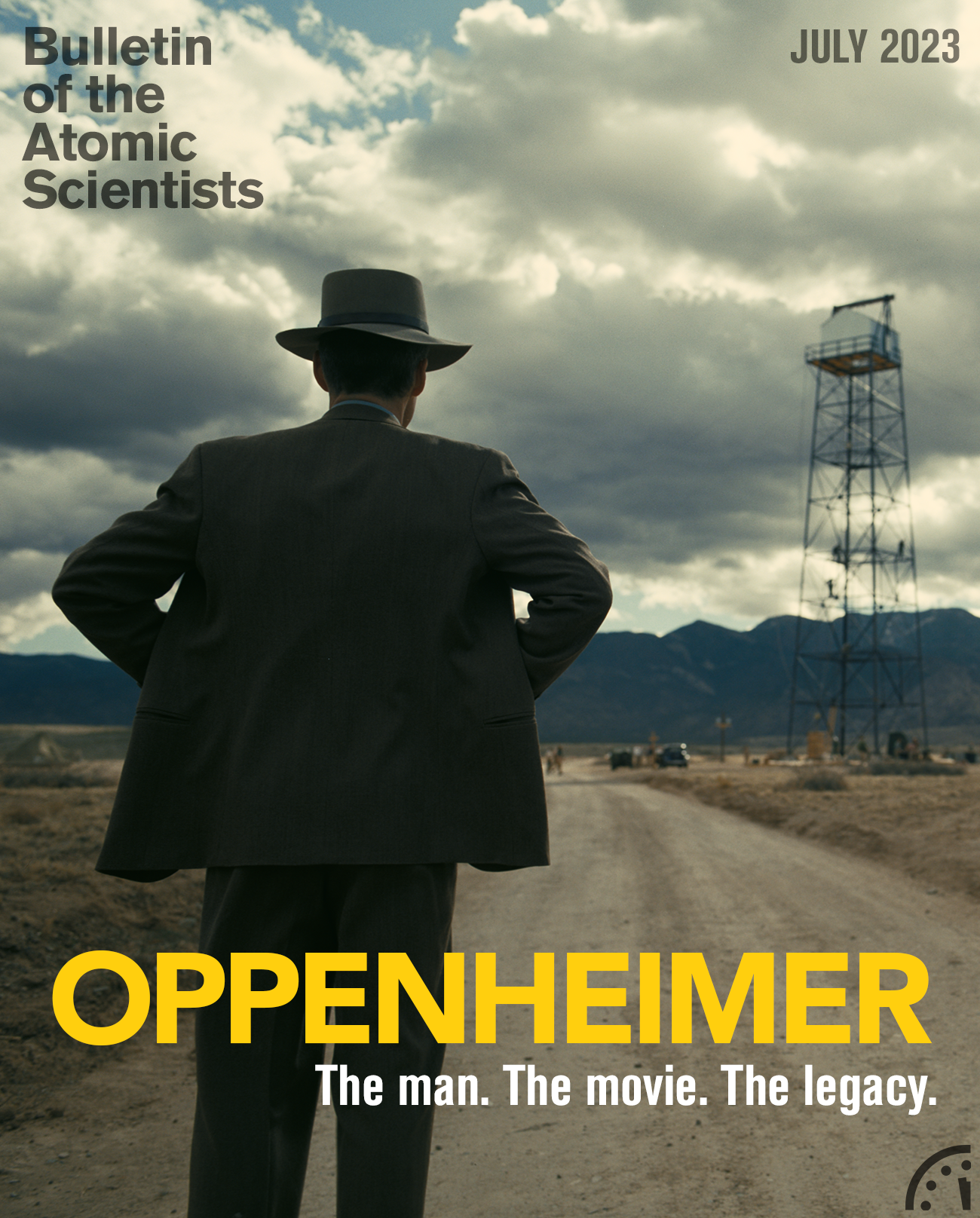

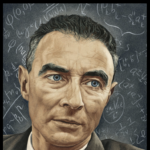

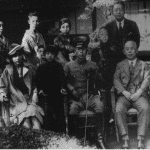
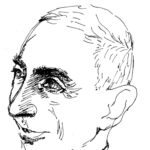
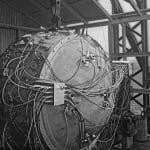
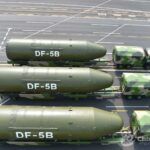
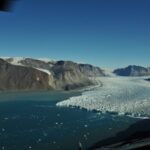


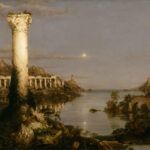
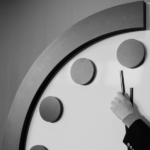







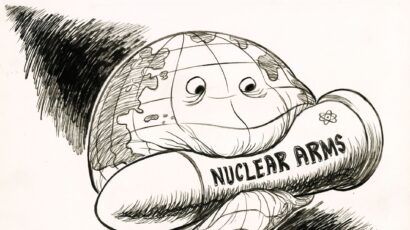
I loved this. A pleasant and personal perspective on some of the Manhatten Project’s key players. Most everyone mentioned is well known but this added some freshness to the existing commentary.
To a student of nuclear disarmament it was further enriching experience to learn first hand description of the development of ultimate capacity weapons developed n the efforts ensemble of the best brains ever put to accomplish the Project.
Interesting. I read “The Brotherhood of the Bomb”, after most files were declassified, and it gave a good picture of Oppie, and made him out to be a thoughtful and capable manager. It also, for me, showed the animus, class, scramble for military institutional power and wealth that made Oppie into a watched and suspected “other”. It appeared he knew a lot, that he had all the power, (he did not, but he hd a central role in making it ll happen), that it was not something he would be able to share with the greedy and the paranoid, so… Read more »